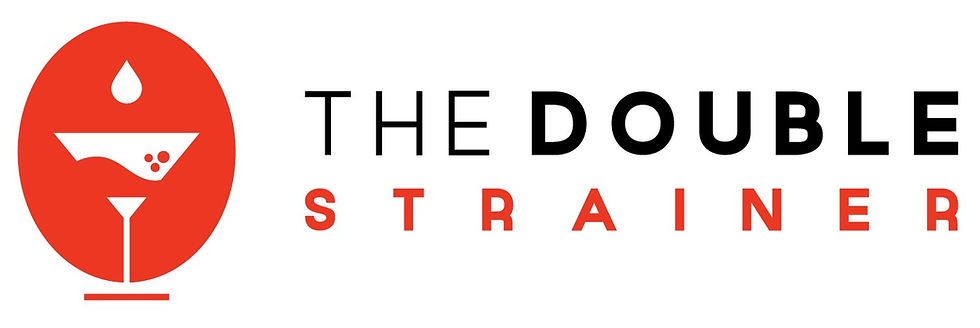Leadership Behind the Bar: Guiding With Respect Instead of Hierarchy and Fear
- infothedoublestrai
- Nov 7
- 4 min read

Great bars aren’t run on intimidation or “rock-star” egos. They’re built by leaders who set standards, protect culture, and help people do the best work of their careers—night after night.This article translates modern leadership research and bar management practices into a practical guide for Head Bartenders, Bar Managers, and Beverage Directors.
1. What is a Leader?
A leader is not the loudest voice or the person with the fanciest title. A leader is someone who:
Creates clarity of purpose and standards.
Builds psychological safety (a culture where people feel safe to speak up, make suggestions, and admit mistakes without fear).
Aligns the team’s daily work with the bar’s concept and brand.
This idea follows the Service-Profit Chain, a proven hospitality model showing that a great employee experience creates great guest experiences—and therefore profit.
In short: a leader is the gardener of performance and the guardian of culture.
2. The Mindsets of Modern Hospitality Leadership
Servant Leadership
Put people’s growth first. Share power. In practice: fix problems before they become obstacles for your team.
Transformational Leadership
Inspire, challenge, and guide people individually. Reward curiosity and ideas.
Situational Leadership
Adapt your approach: new staff need direction, experienced ones need autonomy.
Psychological Safety
Set high standards but encourage honesty. Mistakes are learning moments, not punishments.
3. Building Your Team
Hire for Attitude, Train for Skill
You can teach recipes—but not empathy or humility. Look for curiosity, respect, and genuine interest.
First 30 Days of Onboarding
Days 1–3: Culture, concept, safety, basic tools.
Week 1: Shadowing, observing, small prep tasks.
Week 2: Practical micro-tests (speed, specs, hygiene).
Weeks 3–4: Independent work with mentorship.
Define Roles Clearly
Every position should have a purpose: who does what, when, and why. Clarity prevents frustration.
4. Team Building That Actually Improves Service
Forget team-building games; create shared mastery instead.
Pre-shift rituals: 10-minute meetings with one goal, one focus, one recognition.
Service warm-ups: short exercises (mock orders, garnish drills, storytelling practice).
Cross-training: let people swap roles to understand different pressures.
This builds trust and adaptability.
5. Standards Without Fear
Respect is not softness. It’s firmness delivered with dignity.
Clarity beats control
Use SOPs (Standard Operating Procedures) to remove guesswork.
Call behavior, not people: say “The jigger left out breaks hygiene protocol,” not “You’re careless.”
Praise in public, correct in private.
Invite feedback: ask, “What risk do we see tonight?” or “What can we improve tomorrow?”
6. Transferring Passion and Meaning
People don’t stay for rules; they stay for purpose.
Give every cocktail a story—about origin, ingredient, or inspiration.
Let each team member become “guardian” of one drink, section, or prep.
Recognize learning, not just perfection.
7. Growing Your People
Create visible steps for growth inside the bar:
Barback: Focus on cleanliness, prep speed, and supporting the bartenders.
Bartender: Learn recipe accuracy, control waste, build guest connection.
Senior Bartender: Contribute to menu creation, lead pre-shifts, coach others.
Supervisor / Head Bartender: Manage costs, maintain quality, and develop people.
Assign small projects (menu sections, batch prep, training sessions) so people grow through ownership.
8. Coaching on the Floor (The GROW Method)
Use this 5-minute coaching structure:
Goal: What do you want to improve?
Reality: What’s happening now?
Options: What can you try?
Will: What will you commit to before the next shift?
Adapt your tone to the person’s experience.
9. Rituals That Build Culture
Daily:
10-minute pre-shift with focus + one appreciation.
5-minute post-shift “keep / stop / start” reflection.
Weekly:
Calibration tasting (taste + timing + consistency).
Short one-on-one check-ins for goals and feedback.
Full deep-clean reset—because visible standards reinforce invisible values.
10. Communication: The Art of the Pre-Shift
A pre-shift is more than a briefing—it’s the heartbeat of consistency.
Include:
Reservations and guest notes.
Specials and 86’d items (industry slang for unavailable ingredients).
Tonight’s upsell or storytelling focus.
A short reminder of one key value (“kindness,” “speed,” “precision”).
Recognition of a good performance.
Keep it short (10–15 minutes), structured, and enthusiastic.
11. Managing Pressure and Emotional Labor
Hospitality is emotional work. Under pressure, staff may “surface act” (smile on the outside while stressed inside). A good leader:
Rotates breaks.
Normalizes open talk about stress.
Avoids overloading one person repeatedly.
Acknowledges effort, not just results.
12. Metrics That Matter (and Motivate)
Track both numbers and human progress.
People: retention rate, training completed, internal promotions.
Service: guest feedback, response time, recovery success.
Quality: taste-test scores, waste percentage.
Finance:
COGS (Cost of Goods Sold): how much ingredients cost versus what you sold.
Labor %: wages compared to sales.
Attachment rate: how often staff successfully recommend add-ons (e.g. “Would you like olives with that Martini?”).
Celebrate these metrics to motivate—not punish—your team.
13. Handling Mistakes and Conflict
Use blameless post-mortems: focus on what failed, not who failed.
Ask your team for upward feedback: “What could I do better as your leader?”
Encourage people to voice concerns early—silence is costlier than error.
14. The Payoff: From Culture to Profit
The Service-Profit Chain makes it clear:Invest in people → better team experience → stronger guest experience → profit.
Respect-based leadership isn’t a “soft” approach—it’s smart business.
Final Thoughts
Behind every memorable bar is a leader who listens more than they speak.A person who builds clarity instead of fear, who transforms standards into pride, and who helps others grow until they no longer need supervision.
When you guide with respect, your bar becomes more than a workplace—it becomes a rhythm, a culture, a shared story.That’s what guests feel before the first sip.
Written by: Riccardo Grechi
For more articles about mixology knowledge click HERE
and stay up to date subscribing to our newsletter HERE







P2
Thank you! So useful